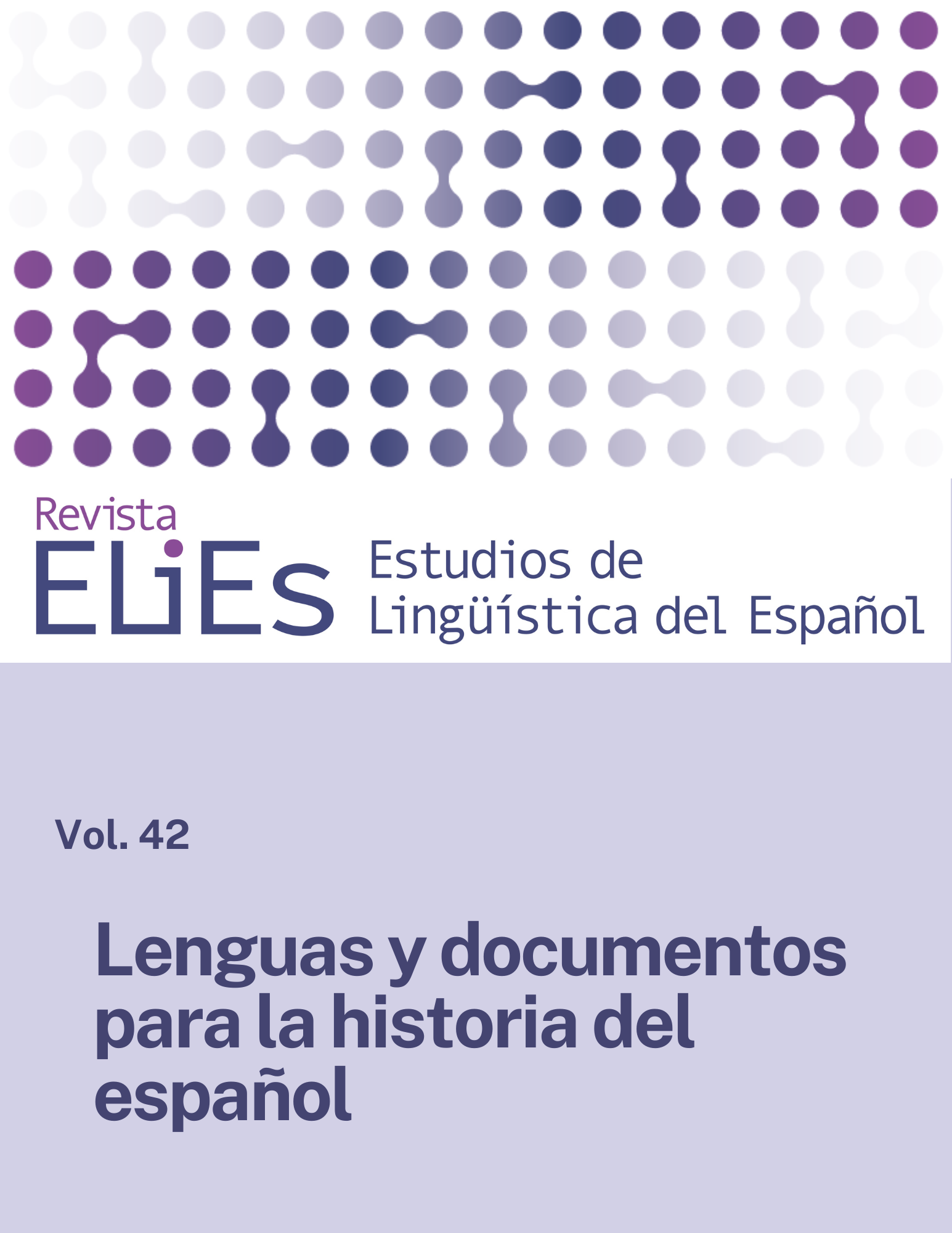Lematización y visualización cartográfica del corpus CODEA. Formas de la conjunción ‘y’ en el norte de Castilla medieval
DOI:
https://doi.org/10.36950/elies.2020.42.8473Palabras clave:
lematización, conjunción ‘y’, letra gótica, letra humanística, diptongo creciente, signo tironiano, BurgosResumen
A pesar de que en la lingüística de corpus existen controversias en cuanto a la manera de lematizar o agrupar las formas flexivas en una forma principal, hay consenso entre los investigadores sobre su utilidad en distintos niveles de estudio. Especialmente en el nivel gráfico, fonológico y morfológico, la lematización es fundamental sin ningún género de dudas. En la práctica, en el inventario de formas lematizadas, no se nos puede escapar ninguna variante rara, poco frecuente, en la observación total de la agrupación. Como ejemplo de la importancia de la lematización de documentos antiguos españoles, hemos analizado distintas formas de la conjunción ‘y’, que es peculiar en castellano al lado de la forma general en las lenguas históricamente relacionadas. Efectivamente, las variantes precursoras de la forma se han encontrado con anterioridad al siglo XV, y nos sirven de importantes indicadores para aproximarnos a su aparición repentina en el mismo siglo, con la llegada de la nueva letra humanística. Anteriormente, la forma latente estaba oculta bajo la letra gótica en forma del signo tironiano <&>. Veremos las razones del cambio histórico de a en el castellano medieval, que se caracteriza por la abundancia estadística del diptongo creciente, , idiosincrásico del castellano en contraste con las lenguas colindantes. Al finalizar el estudio, presentamos la historia de la conjunción en su dimensión geohistórica con visualizaciones cartográficas.
Descargas
Descargas
Publicado
Número
Sección
Licencia
Derechos de autor 2020 Hiroto Ueda, Pedro Sánchez-Prieto Borja, Antonio Moreno Sandoval

Esta obra está bajo una licencia internacional Creative Commons Atribución 4.0.




